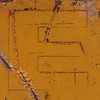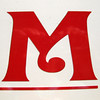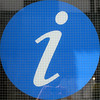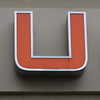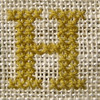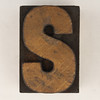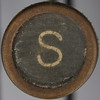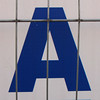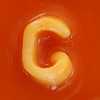Formal Response 3 – Gaming and Leapfrog
There is little doubt that the written word has undergone significant changes since its inception hundreds of years ago. The continual shift of design and words promotes both cultural changes and is an indication that nothing is ever stagnant or unchanging. Jay Bolter in his book “Writing Space” indicates that “print today is continuing to remake itself in order to maintain its claim to represent reality as effectively as digital and other visual media” (Bolter, 2001, p. 47). According to Bolter, print has undergone a transformation of reverse ekphrasis in which the visual image now embodies words. Bolter also contents that print has undergone a visual renovation that appeals to all the senses in order to represent a more “real” application of reality. This notion of competition or restructuring of print establishes a situation to further examine Bolter’s contention that print has undergone both reverse ekphrasis, evident in visual media and Sparkline, and a sensual revolution, as indicated by online role playing games and technologically advanced learning toys. The “modernization” of print implies an attempt to stay current in contemporary, technical times.
The Greek term Ekphrasis has been used to describe the act of envisioning a description as if it were physically present. Bolter challenges that print has reformulated itself in a type of reverse ekphrasis in which the image portrays or explains words (Bolter, 2001). The origins can be seen in Rebus forms of communication, where pictures (or symbols) are utilized for their sounds to represent new words. Rebus systems were common in Egyptian writings and used as a tool for children to learn reading in the 19th century. Rebus systems indicate that the visual representation of words has been present throughout history. Perhaps Bolter suggests that print has reverted back to picture depiction of words due to the need for a more accurate symbol of reality. This is evident in the USA Today “Snapshots” where pictures are the data. The idea of reality as symbols is corroborated by Murray Krieger, who explains change stems from our “desire for the natural sign, the desire, that is, to have the world captured in the word” (Krieger, 1992, 11, from Bolter, 2001, p. 57).
Modern or reverse Ekphrasis is best indicated by the transfer of the novel to film. The adaptation of the novel into motion picture further stresses the shift from the written word to the visual representation of words. The novel, once a bound text, can now been seen and heard as a movie. The movie itself could be defined as a form of Ekphrasis as it is taking words of a novel and explained through a series of images. Bolter extends this argument through the example of the reproduced book. Reverse Ekphrasis is quite evident through the reproduction of a novel cover after its movie form has been produced (Bolter, 2001). The image of the movie on the novel cover serves as a symbol for the novel itself, as Bolter suggests, “the book must now do its best to recreate in words the experience of seeing the film” (Bolter, 2001, p 57). One can not help but think of the tween series “Twilight” in which the film’s main character, played by Robert Pattinson, graces the covers of the entire series. As if this were not enough, the merchandise created from the film (and somewhat due to the books themselves) further proves the shift to visual representation of words. The Twilight series has buttons, magnets, posters, and even T-shirts in which a fan can declare there affiliation for either of the two male characters vying for the narrator’s affections. These shirts simply say “Team Edward” or “Team Jacob” Curiously; these words become visual symbols for the novel/film and convey implicit knowledge that aids the experience of authenticity.
Edward Tufte has designed a method of making the experience of the written word more authentic. Tufte created a data system which he aptly name Sparkline. Sparkline essentially is for “small, high resolution graphics embedded in a context of words, numbers, images” and is “data-intense, design-simple, word-sized graphics” (Edward Tufte 2006). Tufte states that traditional charts are too general and isolated from the text, whereas Sparkline graphics are succinct and located in the text where they are discussed. What Tufte has created is a visual of information acts as a “kind of “word” that conveys rich information without breaking the flow of a sentence or paragraph made of other “words” both visual and conventional” (Wikipedia, Edward Tufte). Sparkline promotes the notion of reverse ekphrasis as the data is presented as an image and represents words in a visual format. Reverse Ekphrasis is evident in our culture, yet the “remediation” of print also includes, according to Bolter, visual changes that heighten our other senses, making print more lifelike.
The sensual transition of the written word is evident as our culture shifts to a more technical medium. In today’s culture art must imitate life or it must be as authentic to real life as possible. The focus now rests of the need for authentic entertainment and this is usually found in a visual format. In order for the written word to compete, it needs to be restructured in a format that visually appeals and provides an authentic experience. Examples of this transition are clearly exposed in the fantasy role playing games such as Dungeons and Dragons and World of Warcraft. Dungeons and Dragons is a fantasy role playing game created in 1974 in which each player is a character moving through another world focusing on challenges and tasks which must be accomplished. Dungeons and Dragons is a visual form of the written word. The new versions of the game are online and have books with more pictures and diagrams which are “far more pleasing to the eye” (Miller, 2008, para. 11). The visual component of the books, along with the role play which engages emotions, sound, and tactile functions, serves as a precursor to the transition of the written word into a sensual or physical format. The next generation of the physical written word is World of Warcraft. World of Warcraft, or WoW, is a multiplayer online role playing game where a story unfolds through quest text and scripted non-player characters. WoW truly is a sensual experience of the written story. It incorporates the visual component with the virtual worlds the characters must engage in, it provides the player with the feeling of “being there” as they are the character that navigates through the world. It also includes sound and even touch as the player must use the keyboard, mouse etc. to continue the reading. The player must envision and engage in the fantasy world. The game provides the player the ability to control some of the text, which offers the player a truly authentic written experience. Another example of this, as suggested by Bolter, is MOO gamers who navigate in a fantasy world where they write (similar to Ekphrasis) and envision those words as a reality world online. WoW is a more complex version of a MOO with complex storylines. WoW truly is a modern version of the written word, where the reader sees the written word in a sensual context and is intricate in the storyline. The sensual shift does not relate only to the role playing genre, but can be seen in other forms in our culture.
One such form is found in the educational toys created by LeapFrog, where the slogan itself, “See the learning” denotes a visual context. LeapFrog has been using technological advancements to enhance educational toys for young children. The LeapFrog website shows the requirement for knowledge to be sensual and states:
“See it. Hear it. Say it. Touch it. Learn it.
At LeapFrog, we surround the child with multiple ways of learning by tapping into their senses. Interactive learning experiences are further reinforced with immediate, and positive, corrective feedback. This multi-sensory approach has been consistently proven effective by third-party efficacy studies and research.” (LeapFrog, 2009, para. 5).
Case in point, LeapFrog’s book system: the “Tag Reading System”. This system is a further sign of the shift towards the written word as a sensual experience. The Tag reading system, uses a reader pen that the child can highlight over a word to sound it out, to make characters sing, or to make characters talk. The Tag reading system provides reading as a sensual experience. The website indicates this:
“The Tag Reading System engages children’s senses to make reading a rich, fulfilling experience. With each touch of the Tag reader to the book’s pages, words talk, characters sing and stories live out loud. With over 20 books and games including favourite TV, movie and classic tales, each Tag book allows children to learn at their own pace, building confidence” (LeapFrog, 2009, para. 1).
What is interesting is that the LeapFrog product advertises the need for a multi-layered experience when reading. In addition, the fact that the books contain information from “favourite TV and Movies” is another affirmation of the written word competing with its visual counterpart. LeapFrog products juxtapose the new era of the written word, as it proves that reading and writing are increasingly more visual and call for a sensual experience where legitimacy can be replicated.
Bolter’s “breakout of the visual” indicates a new form of the written word. The written word, like our culture, is not stagnant and must change and adapt to new circumstances and demands of society. This change is further ingrained due to the increase in multimedia and technological advancements. The adaptations undergone by the written word indicate our society’s desire for a more authentic experience, one where simplicity is combined with symbols and all of our senses.
References
Bolter, Jay David (2001). Writing Space Computers, Hypertext, and the Remediation of Print. Mahwah, NJ: Lawrence Erlbaum Associates.
Krieger, M. (1992). Ekphrasis: The illusion of the Natural Sign. Baltimore: John Hopkins University Press. Quote Retrieved from Bolter, Jay David (2001). Writing Space Computers, Hypertext, and the Remediation of Print. Mahwah, NJ: Lawrence Erlbaum Associates.
LeapFrog. (2009). About Us. Retrieved from
http://www.leapfrog.ca/en_ca/home/about_us.html
LeapFrog. (2009). Tag Reading System. Retrieved from http://www.leapfrog.ca/en_ca/families/tag/tag_system/tag_reading_system.html
Miller, John J. (2008, July 1). Dungeons and Dragons in a Digital World. The Wall Street Journal Retrieved from
http://online.wsj.com/public/article/SB121487030020517745.html?mod=2_1578_middlebox
Tufte, Edward (2006). Beautiful Evidence. Graphics Press
Wikipedia. Edward Tufte. Retrieved on 27 October 2009. Retrieved from http://en.wikipedia.org/wiki/Edward_Tufte
Wikipedia. Rebus. Retrieved on 27 October 2009. Retrieved from http://en.wikipedia.org/wiki/Rebus
Wikipedia. World of Warcraft. Retrieved on 27 October 2009. Retrieved from http://en.wikipedia.org/wiki/World_of_Warcraft
November 25, 2009 1 Comment
I had to try this one too!
November 16, 2009 1 Comment
RipMixFeed Explanation
My Toondoo is on the King-Byng crisis of 1926. It was the last time the Govenor General was able to control the affairs of Canada. Prime Minster Mackenzie King wanted to dissolve parliament and call a new election due to the fact that his cabinet had done some less than reputable things. By calling an election, King was hoping he would aviod a vote of non-confidence which he was surely loose. However, when King asked to dissolve parliament the Govenor General, Lord Byng of Vimy said no due to the fact that he thought King was not owning up to his responsiblities. King, outraged, resigned on the spot which brought in the leader of the opposition, Aurthur Meighen into power. What is ironic, is that Meighen then asked Byng to dissolve parliament which Byng granted. King was able to twist the story to make it look as though Byng and Meighen had a plot to overthrow him! In the election King won by a landslide and gained a majority. This is a significant moment in Canadian history because it was the last time the Governor General was able to override the Canadian elected officials (the PM).
I had so much fun making this toondoo! I am going to use them with my classes for sure. It is a great way to represent material in a visual format. Also, I find it interesting that my cartoon conveys the same material that I wrote above. A fantasic site as well!
If you haven’t checked it out yet, Toondoo even has political figures such as Obama, Clinton etc. They even have superstars like Michael Jackson! I chose to make my own characters by uploading a picture of the real characters and then make my cartoon version based on the picture.
A great resource!
November 11, 2009 No Comments
RipMixFeed – My ToonDoo!
November 11, 2009 No Comments
Formal Response # 2 – The Evolution of Culture: From Oral to Visual Dominance
The dawn of the printing press not only changed the realm of writing, it also fostered a crucial change in human thought process and learning. The evolution of the written word into a mass-produced, evenly distributed visual work promoted a cultural shift from oral to visual dominance. Walter Ong provides important insights on the cultural shift and provides thorough examples to validate it. However he falls short of providing an adequate theory for the physiological changes within the human brain. This does not necessitate that he is incorrect, but rather that more information could be provided. The visual shift occurring in our culture has not always been met with enthusiasm. In fact, there is a form of backlash against the visual stating that it cultivates a lack of intelligence. Ong’s central message indicates a move from the oral to visual realm. Yet it can also be theorized that the shift is actually a return back to the visual. The theory we accept is minor in comparison to the interchange of the two realms, which will provide major implications for western culture and self-consciousness.
The printing press is the technological advancement that ushered in the cultural swing of oral to visual. Ong argues that the letterpress situates words in space and locks them in place forming a visually appealing work. The printing press also allowed access to works en masse and was structured in a manor more easily read than that of manuscripts written by hand. Marshall McLuhan (1962) suggests that a technology, such as the printing press, creates changes in our thoughts and expressions. In other words, the new technology changes our consciousness. Ong (1982) uses numerous examples as evidence for the advancement of the visual cultural shift theory. The creation of lists, indexes, and even our own axioms indicate our move from oral to visual. Ong’s references to different cultures and examples are extensive and confirm that a shift had occurred, but Ong lacks physiological evidence as to why a change had taken place in human consciousness.
The human brain is divided into two sides, the left and the right. Studies of patients with split brain provide us with insights into how the brain works. Their findings suggest that the left portion of the brain is responsible for speech, abstract thinking, logic, and numeracy. The right portion of the brain deals with spatial recognition and facial recognition, suggesting that the right portion of the brain is more visually oriented. Leonard Shlain confirms this theory in his book the “Alphabet Versus the Goddess: The Conflict Between Word and Image”: “The right brain is nonverbal. … It comprehends the language of cries, gestures, grimaces, cuddling, sucking, touching, and body stance. Its emotional states are under little volitional control and betray true feelings through fidgeting, blushing, or smirking.” (Shlain, 1998, 18-19). Malcolm Gladwell’s book “Blink”, argues that cognition based on the visual is faster and more accurate than cognition influenced by words or logic (Gladwell, 2007). Therefore, the rapid change in our culture due to new technologies could cause us to use the rapid, more accurate side of the brain for processing new information. The theory suggested here has fascinating implications particularly for the fast paced world of the 21st century. Our reliance on visual images could be due to our need to get information at a more rapid pace.
Visual perception may be a more powerful tool for incorporating information than oral. The New Encyclopedia website further demonstrates a visual dominance due to the fact that visual perception is multi-channeled, whereas auditory perceptions are mono-channeled. “The eye can absorb that many different things at once without confusion or overload, but the ear’s inability to take in multiple soundtracks — multiple dialogues — at the same time is further evidence of the greater power of visual perception compared with perception of aural (word-based) communication” (New Encyclopedia, 2008). The invention of the printing press created a basis for visual uniformity causing the shift in a need for multichannel communication.
As Ong suggests, culture and perception have shifted from orality to the visual. However, Ong provides numerous examples of intellectuals who revolted against the use of writing, but no examples of those who revolt against the cultural shift from auditory to visual dominance. Lester Faigley, professor of English at the University of Texas, provides some of the major criticisms of the visual shift in his keynote speech presented at the Center for Interdisciplinary Studies of Writing (1998 Conference) entitled “Technology and Literacy in a Wired Academy”. He attests that many scholars are researching the thoughts of images encroaching on written territory: “Barbara Maria Stafford has examined how current attitudes toward images were formed in eighteenth-century England, when educated people began associating images with ignorance, illiteracy, and deceit” (Faigley, 1998, pg. 4). Images were also seen as creating a loss of intellect. This can be seen in Williams Wordsworth’s poem, “Illustrated books and Newspapers”, in which he stated new technologies creating images that foster a lack of intelligence and a move backwards instead of forwards in intellectual discovery. Wordsworth indicates his apprehension of image based culture while trying to hold onto the auditory traditions:
“Back towards caverned life’s first rude career.
Avaunt this vile abuse of pictured page!
Must eyes be all in all, the tongue and ear
Nothing? Heaven keep us from a lower stage!” (Wordsworth)
Could the shift from oral to visual perception be a return to the visual? Ong (1982) suggests that the change occurs but does not necessarily reference whether the shift is a return to the visual or a new conceptual change. Harold Innis suggests that it could be a return to the visual. “the discovery of printing in the middle of the fifteenth century implied the beginning of a return to a type of civilization dominated by the eye rather than the ear” (Innis, 1951, p. 72). It is true that before written text many visuals were used in order to indicate meaning. Different cultures have used picture images to facilitate communication. However, in western culture, it is clear that manuscripts contained visual images as well as text, suggesting perhaps that the shift was from visual to oral and back to visual. The New Encyclopedia’s section on visual culture also asserts that change could have had a visual starting point. Similar to the creation of the printing press, the technological advancements in image making changed our cultural outlook. “The development of photography meant that a mass image-based culture could begin to emerge again, after visual culture had been overwhelmed by verbal and literate culture. To be sure, many innovations in drawing and painting had been achieved, and images had figured widely in the pre-photographic age; but they depended on the skill and perception of the image-maker.” (New Encyclopedia, 2008). Yet, what is more vital at this point is what this shift does to and for our culture.
The shift to a visually dominated culture has its implications for how we perceive ourselves as well as how we learn and interact. The focus, as suggested by Ong, indicates that we are more independent but with the realization that we do not have to be. The technological advancements will change how we read, what we focus on (ourselves vs. society), and the world of academia. Hyperbooks and easily accessible mass media images, and videos will help shape our understanding. What is important to recognize is that the shift in our cultural perceptions is crucial to our understanding. Yet we are only now recognizing the interplay or relationship of the written word and the visual realm. The physical method of reading will shift along with our thoughts of writing conventions. The possibilities of this interplay will have a momentous effect on our current cultural belief system.
References
Faigley, Lester. (1998) Technology and Literacy in a Wired Academy. Address. Center for Interdisciplinary Studies of Writing. Minnesota, Minneapolis. Retrieved from http://writing.umn.edu/docs/speakerseries_pubs/Faigley.pdf
Gladwell, Malcolm. (2007). Blink: The Power of Thinking Without Thinking”. Back Bay Books.
Innis, Harold. (1951). The Bias of Communication. Toronto: U of Toronto.
McLuhan, M. (1962). The Gutenberg galaxy: The making of typographic man. Toronto: University of Toronto Press.
Ong, Walter (1982) Orality and Literacy. London and New York: Routledge.
Shlain, Leonard. (1998). The Alphabet Versus the Goddess: The Conflict Between Word and Image. New York: Viking, 1998.
The New Encycopedia. (2008). Visual Culture. Retrieved on 7 Oct. 2009. Retrieved from http://www.newworldencyclopedia.org/entry/Visual_Culture
Wordsworth, William. “Illustrated Books and Newspapers”. The Poetical Works of William Wordsworth. Ed. E. de Selincourt and Helen Darbishire. Oxford: Oxford UP, 1958.
November 2, 2009 1 Comment
The Origins of Silent Reading – Research Project
My assignment was completed on the UBC Wiki format. Please view on the site! I hope I have posted this correctly. Enjoy!
http://wiki.ubc.ca/Course:ETEC540/2009WT1/Assignments/ResearchProject/SilentReading
October 27, 2009 3 Comments
This is interesting!
In my web travels I found this website. It is a program designed to reorganize words so they are easier for the visual learner to interpret and understand. Have a look!
October 9, 2009 2 Comments
Commentary 1 – Lengthy because it’s interesting!
A computer cannot replicate a library. The gradual digitization of our society has had profound implications on methods for collecting and preserving writing. A debate currently surrounds the usage of digital methods for storing and retrieving information. While there are positives to digitalizing human knowledge, specifically writing, it is crucial to recognize the many obstacles if there is any expectation of merging written work with the technological world. Thus, the virtual library, without addressing the shortcomings, may be too good to be true. Major legal issues also arise with the attempt at a virtual library. Copy write laws, orphaned books, and Google’s role become major points of contention which to some may seem unethical. It does not have to be black and white. A fusion of technology and written documents is being forged by groups such as the UBC InterPARES project and the Turning the Pages 2.0 toolkit. The digital age and digitization of the written word will have extensive implications for future generations. Our decisions about how to manage the digital written word will set the stage for generations to come. These challenges must be faced to ensure that our past does not become a blank spot in history.
Kevin Kelly’s article, Scrap This Book, focuses on mainly the advantages to a virtual library. According to him, this library will essentially be “one big book of humanity” that encompasses all written documents in human history. As Kelly suggests, there are numerous advantages for all written works to be digital and freely accessed. Scrap This Book indicates that online versions of written work will be more accessible to other cultures that have had little access to information in the past. The article does not however, indicate if poverty or socioeconomic status could be a hindrance to another cultures access to this new library. Currently more than half of the world’s population does not own a computer, making it quite difficult for accessibility of the digital work. What Kelly does emphasize is that the universal library will “deepen our understanding of history, as every original document in the course of civilization is scanned and cross-linked”[1]. The cross-linking of information would be advantageous as “every bit informs another; every page reads all the other pages”[2] The book would resemble the popular information site Wikipedia. The ability to find information, access relatable material, and look up confusing points could foster a better understanding of information.
Furthermore, libraries could benefit from the digitization of written material. Libraries could increase their collections by buying digital books. These online versions would be more cost effective consequently increasing what they can offer the public. Kelly paints a beautiful scene, but there are critics who have reservations about the sole reliance on digital means. These critics maintain that the virtual library maybe over simplified and as a result, unrealistic.
James J. O’Donnell suggests in his article, An Idea Whose Time has Passed, that the digitization of books and the virtual library are “as fresh as last week’s newspaper”[3]. In fact, his article frequently refers to the virtual library as a “fantasy” or “dream”. O’Donnell opposes the view of Kelly indicating that the imperfections of the online virtual library must be acknowledged. O’Donnell questions what information should be included in a digital library, for example, if emails, notes, or shopping lists should be included. It is difficult to decipher what constitutes written work and who would indicate it as such. In this great book of humanity, a question emerges: whose responsibility would it be to moderate the content? Moreover, would classified military documents be included even though it could be a threat the security of that country? It is also apparent that the issue of young children would need to be addressed. As a free and interactive space, should children have access to all parts of the library? Our morals should dictate that the digital library blocks access to adult themes, which does not seem possible unless somehow people prove their age. Yet blocks could have the potential to alter the fundamental principle of the digital library which presumes to be “truly democratic, offering every book to every person”[4].
Another concern is in regards to the Wiki format of the digital library. With a Wiki format, creative works can be “linked, manipulated, annotated, tagged, highlighted, translated, enlivened by other media and sewn together into the universal library”[5]. O’Donnell broaches a concern for this format stating that classic works should not be modified. The moral implication being we should avoid making changes or have the ability to edit the only copies of great works in literature. It would be as if an attempt was being made to alter history. It would be a disservice to history to change it to suit the current generations’ purposes.
There are other fundamental issues in regards to the virtual library. The digital world is currently fragile and still experiences issues in which data can be lost. In Avatars of the Word, O’Donnell makes a striking point in regards to the digital world’s vulnerability:
“We will no longer be able to depend on survival of information through benign neglect. There are medieval manuscript books that may have lain unread for hundreds of years, but offered their treasures to the first reader who found and tried them. An electronic text subjected to the same degree of neglect is unlikely to survive five years.”[6]
The apprehension felt by many is that the reliance on digital will be a gamble of sorts putting us in the position to loose data due to neglect, outdated software, and computer glitches. Conversely, the written word is more permeable despite change or abandonment. In a 2006 article written for Popular Mechanics, corroborates O’Donnell’s unease on the exclusive reliance of digital work. The article, The Digital Ice Age, identifies that many of our software programs that store information are at risk:
“the threat of lost or corrupted data faces anyone who relies on digital media to store documents – and these days, that’s practically everyone. Digital information is so simple to create and store, we naturally think it will be easily and accurately preserved for the future. Nothing could be further from the truth. In fact, our digital information – everything from photos of loved ones to diagrams of Navy ships – is at risk of degrading, becoming unreadable or disappearing altogether”[7]
` The article implies that backwards compatibility is a legitimate concern and evidence exists to confirm these suspicions. The Doomsday book project from 1986 provides a troublesome look into the future. William the Conqueror’s Doomsday book, written in 1086, was compiled into an interactive program where more than a million people submitted documents, photos, and thoughts. Fifteen years later the disks used to compile the work were corrupted due to compatibility issues with the newer systems. Examples such as the multimedia Doomsday book project confirm that the digitization of all written work is fraught with challenge. The realization is that backups, constant care, and updating would be required to maintain the digital library’s functionality.
The business of storage can promote its own problems. There are numerous ethical implications and copy write issues that plague the “dream” of a virtual library. Google is currently scanning vast numbers of books and storing them for future use the digital library. Some suggest, such as Kelly, that Google is simply facilitating the realization of the digital library while at the same time liberating “orphaned” books that are in publisher limbo. Kelly also suggested that the library would be a center for equality and deem the copy write laws obsolete. He considers publishers to be greedy by not sharing their information to the world. The problem with this logic is that Google itself is a business or a company out to make money. It is too simple to believe that Google has purely altruistic motives. Google will receive something from this enterprise, whether that is currently apparent or not.
Who owns what will be a central issue that will have to be addressed as written information becomes digitized and more readily available. Copy write in the future should be clearly presented to ensure credit is provided to those who did the work. Google is not the only company at work on digital projects.
There are several other groups at work forging a middle ground between written work and the digital world. These factions attempt to embrace the digital and technological shifts occurring in our society, while at the same time, maintaining some of the original formatting. A bridge can be made between total digitization and a sole reliance on books. The Rocket eBook is a hybrid of a paper book and digital information. In Writing Space, Computers, Hypertext, and the Remediation of Print, Jay David Bolter suggests the eBook has similar characteristics of a book, such as margin writing and the ability to highlight passages, but also “turns any text into a hypertext in which the reader can search for the occurrence of words and phrases throughout the text, so that the whole text becomes immediately available”[8].
Other initiatives include the Turning the Page toolkit which keeps the appearance of a real book but allows people to have access to the work online. Turning the Page “allows libraries and museums to put entire collections of books online in a compelling 3D environment”[9]. Thus Turning the Page preserves book integrity while enabling people around the world to have access to the documents or written work. In addition to these developments, projects are in progress which address the issue of storage and copy write infringement. The UBC based project InterPARES is attempting to “translate the theory and methods of digital preservation drawn from research to date into concrete action plans for existing bodies of records that are to be kept over the long term by archives ad archival/records units within organization-endowed with limited resources”[10] Essentially, the project creates plans that will facilitate keepers of digital information in the maintenance of records by addressing the issue of backwards compatibility and issues of patent and copy write laws. As stated in the InterPARES overview “Governance, law, art, science and scholarship urgently require concrete plans for the preservation of digital materials so that today’s actions, thoughts, achievements and creations will have a future and the future will have a memory”[11].
Books hold a special place in our culture and society. There is something tactile about reading. Nothing can substitute the feel, texture, and smell of a book. Even history could be altered. Although the advantages of a virtual library are attractive, one must look at the whole picture including the potential problems to comprehend its full potential. Replacing books with all digital material would simply not be feasible. Yet, that does not mean that written material should not be digitized. Instead of one or the other it is possible to embrace both and utilize them to our advantage. As O’Donnell suggests: “Paradoxically this means not asking what computers can do in and four our old institutions; it means asking what needs doing and then looking with a clear unprejudiced eye for the best way of doing it. The answer will often be electronic, but the challenge will be to make sure that what the electrons do is indeed valuable to our society.”[12]
The challenge is to see both sides of the technology. There will always be a place for the pen and paper writing, but it is possible to use the digitization of the written word to enhance not to destroy the other form. Our world is changing and technological innovations will continue to change and shape our understanding. By incorporating both in a hybrid, or symbiotic relationship, more can be achieved without the loss of culture and history.
Works Cited
[1] Kelly, Kevin. “Scan This Book!” The New Yorker 14 May 2006. New York Times. Web. 25 Sept. 2009. http://nytimes.com/2006/05/14/magazine.html
[2] Ibid
[3] O’Donnell, James J. The Virtual Library: An Idea Whose Time Has Passed. University of Pennsylvania. Web. 25 Sept. 2009. www.web.archive.org/web/20070204034556/http://ccat.sas.upen.edu/jod/virtual.html.
[4] Kelly, Kevin. “Scan This Book!” The New Yorker 14 May 2006. New York Times. Web. 25 Sept. 2009. http://nytimes.com/2006/05/14/magazine.html.
[5] Ibid
[6] O’Donnell, James J. Avatars of the World. From Papyrus to Cyberspace. Cambridge, MA: Cambridge, 1998. Web. 25 Sept. 2009. http://www.public.asu.edu/~dgilfill/speakers/odonnell1.html
[7] Reagan, Brad. “The Digital Ice Age.” Popular Mechanics. Dec. 2006. Web. Dec. 2006. www.popularmechanics.com/technology/industry/4201645.html?page=3.com.
[8] Bolter, Jay David. Writing Space: Computers, Hypertext, and the Remediation of Print. New Jersey: Lawrence Erlbaum Associates, 2001. Print.
[9] “Turning the Pages 2.0 – Building the Online Library.” Web. www.turningthepages.com
[10] “InterPares 3 Project – International Research on Permanent Authentic Records in Electronic Systems.” UBC. Web. www.interpares.org
[11] Ibid.
[12] O’Donnell, James J. The Virtual Library: An Idea Whose Time Has Passed. University of Pennsylvania. Web. 25 Sept. 2009.
October 1, 2009 1 Comment
A Thought from the Reading
As I was reading chapter four of Ong’s book I had a thought (which I promptly wrote down so I would not forget). Could it be possible that our brains are prewired or preconditioned for oral forms of communitcation only. Perhaps that is why it is difficult for some to express their thoughts clearly in written form? Oral communication is an innate human product whereas writing is a learned process. In short, I wonder if there is a correlation.
September 24, 2009 6 Comments
Oral Culture – Has something been lost?
I thought I would post my disscussion response from Ong’s chapter three. So far, I have enjoyed the course and am including lots of our ideas in my class. Even though I have a huge learning curve, ( this is my first course in the program) I am finding it easier due to the openness of the class community. So a huge thank you to all of you!
Writing has had much effect on human thought process. Human thought changes with the minor introduction of literacy. The mind shifts from existential or situational intelligence and moves towards more abstract thinking. However, there is something to be said about the oral cultural thinking. It seems very straight-forward and logical. The example of the study with the bears in the North comes to mind. Luria’s questioning involving simple deductive reasoning revealed a different type of answer than I was prepared for. The Illiterate simply stated they had never been there and each region has its own type of animal. I quite liked that answer. It seems more honest or truthful. It is important to think in terms of comprehensive descriptions and more analytic thought but I still find the merits in a oral cultures outlook. Ong suggests that writing provides us with the ability to free the mind of arduous tasks of creating “memorable thoughts” and allows us to turn to more “outside the box thinking”.
Other changes in human processes that occur due to writing include our ability to self analyze and use abstract categorization. The studies identified in Ong’s work suggest that non-literate cultures do not fully possess the ability to look inside them and reflect. In other words they do not have the ability self analyze. Therefore, being able to write (which in itself is an individualistic task) provides us with the ability to look inwards at ourselves whereas oral cultures still think of themselves in external circumstances. The other major change with the introduction of writing is our ability to classify abstractly. Oral cultures will give the names for objects “plate” vs. the abstract “circle”.
These changes to some extent weaken memory. Ong suggests that oral cultures remember by using formulas (repetition, mnemonic patters, alliteration, epithets etc) to help remember what has been said. Orality and Literacy also demonstrates that oral cultures do not memorize verbatim, but make changes due to their own interpretation and the climate of their audience. However, because we have the ability to “write things down” instead of remembering without the use of paper and pen I believe we have lost some of our ability to remember. From my own personal experience, if I do not “write it down” I may forget to do it. Our loss of formulas in speech may contribute to our loss of memory. Ong indicates that with the introduction of writing, came the loss of formulas due to sounding clichéd or redundant. The loss of this may contribute to our inability to remember as well as those in an oral culture.
Does it matter? To some extent it matters. We will become increasingly reliant on “looking stuff up” and the loss itself is regrettable. I somewhat romanticize the oral cultures because of their ability to recite beautiful poems and how they are able to think in such a straightforward (honest) manor. In regards to memory, I find that sometimes I have brilliant insights, subsequently I don’t write it down, and forget. I wonder if someone in a primarily oral culture would have the same problem. Still, my bias leans towards literate cultures and the ability to use deductive reasoning and abstract thinking, which truly opens so many more doors in intellectual exploration. I would not be able to talk to all the authors I have read and never would have known their opinions or thoughts on a subject. For that I am fortunate. In that regard, if we have the ability to write something down to remember it are we really loosing anything tangible?
September 23, 2009 No Comments
Quote of the Day:
“How can I know what I think till I see what I say”
– Graham Weillas The Art of Thought
Writing solidifies our thoughts? Or perhaps an indication of the importance of oral discussion. Thoughts?
September 23, 2009 1 Comment
Thought this was interesting!
From Ohio State University – Research News
I thought this article was related, especially regarding the discussion we were having about the need to print out the readings from online sources. Enjoy!
http://researchnews.osu.edu/archive/comptext.htm
TEXTS ON COMPUTER SCREENS HARDER TO UNDERSTAND, LESS PERSUASIVE
WASHINGTON – Students who read essays on a computer screen found the text harder to understand, less interesting and less persuasive than students who read the same essay on paper, a new study has found.
Researchers had 131 undergraduate students read two articles that had appeared in Time magazine – some read from the magazine, some read the exact same text after it had been scanned into a computer.
“We were surprised that students found paper texts easier to understand and somewhat more convincing,” said P. Karen Murphy, co-author of the study and assistant professor of educational psychology at Ohio State University. “It may be that students need to learn different processing abilities when they are attempting to read computerized text.”
Murphy said the results of this preliminary study cast doubt on the assumption that computerized texts are essentially more interesting and, thus, more likely to enhance learning.
“Given that there is such an emphasis on using computers in
the classroom, this study gives educators reason to pause and examine the supposed benefits associated with computer use in classrooms,” she said. “This study provides a first step toward understanding how computers might influence the learning process.”
Murphy conducted the study with Ohio State graduate students Joyce Long, Theresa Holleran and Elizabeth Esterly. They presented their results Aug. 5 in Washington at the annual meeting of the American Psychological Association.
The study involved 64 men and 67 women, all undergraduates at Ohio State. The students read two essays that had appeared in Time, one involving doctor-assisted suicide for terminally ill patients and the other about school integration.
Before they read the essays, the students completed questionnaires analyzing their knowledge and beliefs about the subjects in the texts.
After the readings, the students completed questionnaires that probed their understanding of the essays and also asked them about how persuasive and interesting they thought the essays were.
One-third of the students read the print essays and responded to the questionnaires on paper. One-third read the essays on a computer and then responded to the questionnaire on paper. The final third of participants read the essays on the computer screens and responded to the questionnaire online.
The results showed that students in all three groups increased their knowledge after reading the texts, and the beliefs of students in each group became more closely aligned with the authors.
However, there were important differences, such as the fact that students who read the essays on the computer screen found the texts more difficult to understand. This was true regardless of how much computer experience the students reported.
“In some ways, this is surprising because the computerized essays were the exact same text, presenting the exact same information,” Murphy said. The computerized texts even included the small picture that appeared in the print edition.
“There is no reason they should be harder to understand. But we think readers develop strategies about how to remember and comprehend printed texts, but these students were unable to transfer those strategies to computerized texts.”
The students found the computerized texts less interesting than printed text, which should be expected if they didn’t understand the computerized versions as well, she said.
Students who read the essays online also rated the authors as less credible and the arguments as less persuasive. “Again, it may be that if these students did not understand the message, they would not judge the author to be as credible and might not find the arguments as persuasive.”
There were no significant differences between the students who read the texts online and responded to the questionnaires on paper, and those who read the online texts and also responded to the questions online.
Murphy said that if the college students in this study had difficulty understanding computerized text, such text may present additional hurdles for less competent readers.
“We shouldn’t make it more difficult for children to learn, which is why we need to be careful about how we use computers in the classroom,” she said.
“A lot of questions have to be answered before we continue further into making computers part of the curriculum.”
September 21, 2009 No Comments
Technology – Definition
I used the “Did you Know” YouTube presentation created by Karl Fisch and modified by Scott McLeod. I like it simply because it is a technological presentation, created and broadcast globally through YouTube and because of the information it presents on the information age. The technical aspects it mentions are both the exciting and disturbing aspects mentioned in the Papyrus to Cyberspace broadcast and well as some of the others readings. This presentation reflects that new technologies can be both a positive and ominous force. It also demonstrates the creation and use of technology and how it’s interrelated with life. I find it helps illustrate where and how technology fits in our Western society.
Highlights of the presentation include:
– If Myspace were a country it would be the fifth largest
– The amount of text messages daily exceeds the population of the planet
– There are roughly 540,000 words in the English language ( five times the amount in Shakespeare’s time)
– New amounts of technical information doubles every two years
– Those taking a four year technical degree will find that the information they learned in their first year will be obsolete by the time they graduate
September 14, 2009 2 Comments
Text – Definition
Beowulf
The beginning might not be the end. And that night
Grendel cam again, so set
On murder that no crime could ever be enough,
No savage assault quench his lust
For evil. Then each warrior tried
To escape him, searched for rest in different
Beds, as far from Herot as they could find,
Seeing how Grendel hunted when they slept.
Distance was safety; the only survivors
Were those who fled him. Hate had triumphed.
Author unknown
Line 134-143
Translated by Burton Raffel
Signet Classic – New American Library, 1963
For a representation of text my initial thought was Beowulf. For me, Beowulf is one of the ultimate representations of text. This epic poem has an unknown author and is thought to be one of the first documented texts in Anglo-Saxon history. Much debate surrounds this poem as it is thought in many scholarly circles to be a collection of oral stories. Walter J. Ong states in his book, Orality and Literacy, the difference between written literature and oral tradition. He states that “Writing makes ‘words’ appear similar to things because we think of words as the visible marks signalling word to decoders: we can see and touch and inscribed ‘words’ in texts and books. Written words are residue. Oral tradition has no such reside or deposit.” (pg. 11). Thus I see the epic poem Beowulf to be a juxtaposition of text and oral traditions. One of the first written documents in the English language is an illustration of the evolution (weaving and stitching) of written English.
September 14, 2009 No Comments
When East Meets West – Technology

When East Meets West, originally uploaded by CiaoChessa.
Hello,
My name is Lindsey Martin and I chose this photo because I believe it demonstrates the idea that new technologies change communities and cultures. The course thus far has indicated that some cultures use new technologies while others choose not to. I find this photo to be indicating the balance of power that some of the readings have shown. New technologies create a shift in the balance of power and I believe the image, in an almost ironic sense, shows this. The two men, who are clearly traditional in their culture, using cameras could indicate that new technologies will have an effect on how we live and changes how we see our world and community.
I am a secondary school teacher in Surrey, BC and have been teaching for five years. I primarily teach social studies and history. My interest in this course initially was the idea of looking at technology and writing in a new way. I have always looked at technology and writing in a very broad sense and I am now excited to look at it from all different vantage points. I am also excited to use all this “new technology” in my teaching practice and hope that I can become a better educator through this course and the MET program. This is my first course in the MET program and so far it has been intellectually stimulating! I look forward to working and getting to know all of you!
September 9, 2009 1 Comment


